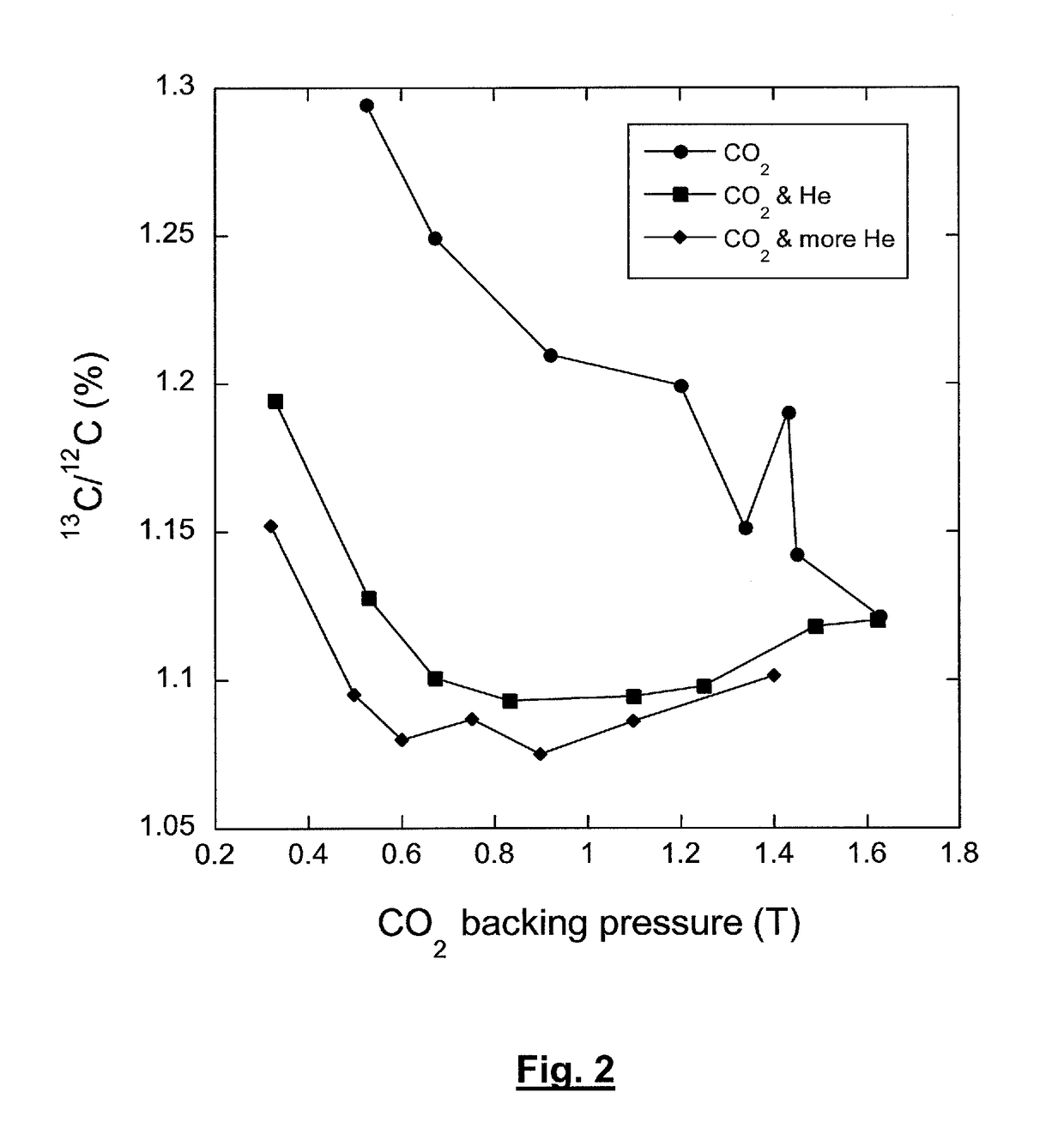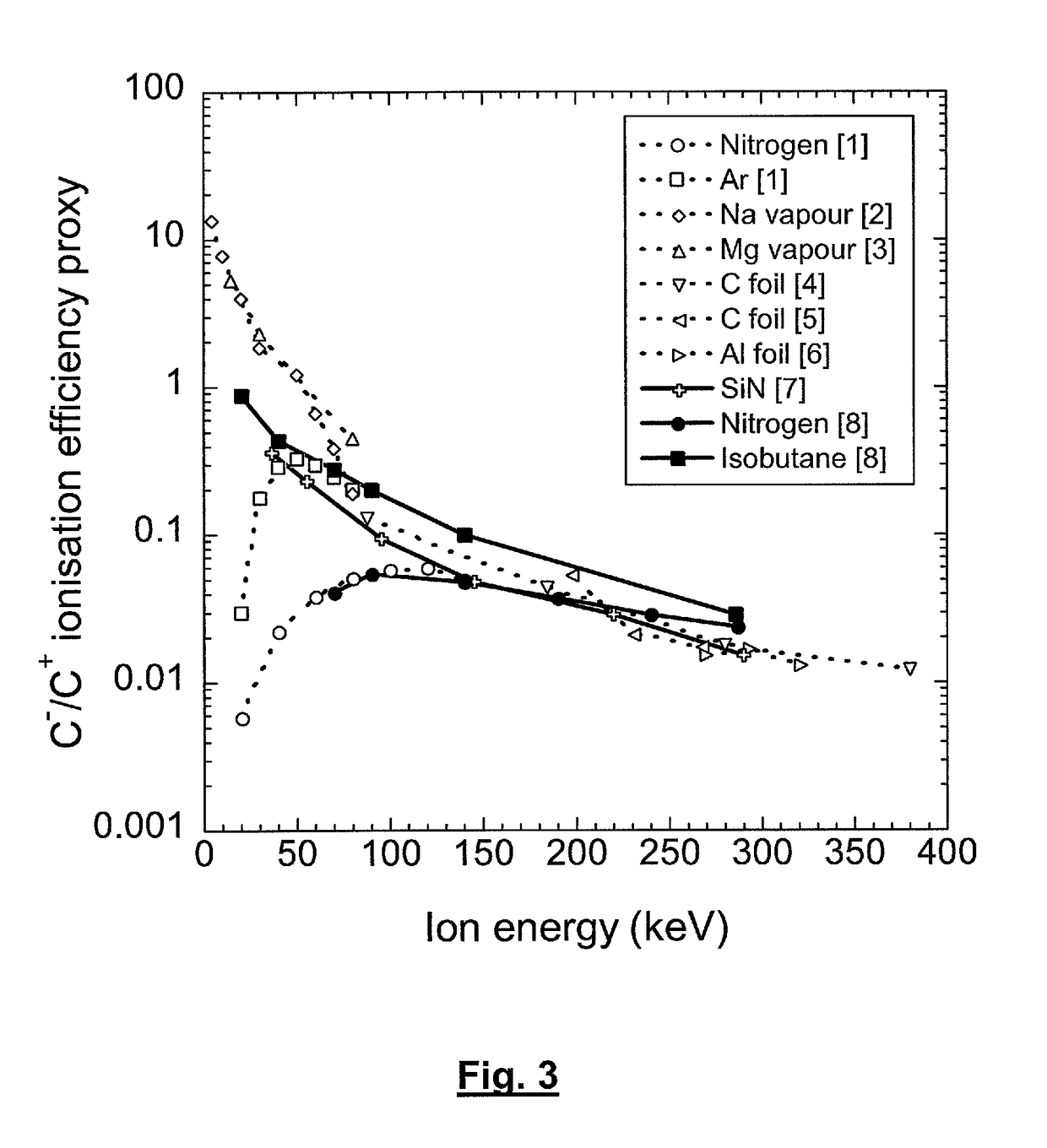Particle Beam Treatment
a particle beam and beam treatment technology, applied in the direction of charging discharge devices, electrical equipment, electric discharge tubes, etc., can solve the problems of sample ionisation efficiency, low, and most sample measurement cost, and achieve the effect of maximizing both molecule suppression and charge exchange and facilitating the subsequent utilisation of remaining species
- Summary
- Abstract
- Description
- Claims
- Application Information
AI Technical Summary
Benefits of technology
Problems solved by technology
Method used
Image
Examples
Embodiment Construction
[0053]FIG. 1 shows a schematic of radiocarbon measurement according to an embodiment of the invention. Beginning in the electron cyclotron resonance (ECR) ion source, interferences to 14C detection are increasingly suppressed until reliable radiocarbon detection is possible. In FIG. 1, the two mass spectrometers each comprise an electrostatic spherical analyser (ESA) and dipole magnet. Component electrical-biasing is not shown but by manipulating the beam energy the carbon stable isotopes can be quantified with Faraday cup detectors.
[0054]The mass spectrometer components shown in FIG. 1 are given by way of example only.
[0055]They may be differently ordered, added to or subtracted from, and other components such as ion velocity Wien-filters may be substituted.
[0056]As is the case of conventional AMS, the 14C is measured in ratio to stable 12C and / or 13C in the common beam from the ion source. The first spectrometer separates the radiocarbon from stable carbon ions which can then be m...
PUM
 Login to View More
Login to View More Abstract
Description
Claims
Application Information
 Login to View More
Login to View More - R&D
- Intellectual Property
- Life Sciences
- Materials
- Tech Scout
- Unparalleled Data Quality
- Higher Quality Content
- 60% Fewer Hallucinations
Browse by: Latest US Patents, China's latest patents, Technical Efficacy Thesaurus, Application Domain, Technology Topic, Popular Technical Reports.
© 2025 PatSnap. All rights reserved.Legal|Privacy policy|Modern Slavery Act Transparency Statement|Sitemap|About US| Contact US: help@patsnap.com



